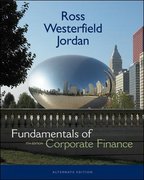
Finding operating and free cash flows Consider the balance sheets and selected data from the income statement of Keith Corporation that follow : Data Table - X a. Calculate the firm's net operating profit after taxes (NOPAT) for the year ended December 31, 2019. b. Calculate the firm's operating cash flow (OCF) for the year ended December 31, 2019 C. Calculate the firm's free cash flow (FCF) for the year ended December 31, 2019. d. Interpret, compare and contrast your cash flow estimate in parts (b) and (c). a. The net operating profit after taxes is $0 (Round to the nearest dollar.) b. The operating cash flow (OCF) is $. (Round to the nearest dollar.) C. The fim's free cash flow (FCF) is $1. (Round to the nearest dollar.) d. Interpret, compare and contrast your cash flow estimate in parts (b) and (c). (Select all that apply.) A. The FCF value is very meaningful because it shows that the cash flows from operations are adequate to cover both operating expense plus investment in fixed and current assets. OB. Depreciation is approximately the same size as net operating profit after tax, so the operating cash flow is about twice the NOPAT. C. Keith Corporation has positive cash flows from operating activities. D. The OCF value is very meaningful because it shows that the cash flows from operations are adequate to cover both operating expense plus investment in fixed and current assets. E. Keith Corporation has negative cash flows from operating activities. (Click on the icon located on the top-right corner of the data tables below in order to copy its contents into a spreadsheet.) Keith Corporation Balance Sheets e December 31 Assets 2019 2018 Cash $1,550 $1,030 Marketable securities 1,850 1,210 Accounts receivable 1,990 1,740 Inventories 2.940 2,840 Total current assets $8,330 $6,820 Gross fixed assets $29,550 $28,120 Less: Accumulated depreciation 14,680 13,140 Net fixed assets $14,870 $14.980 Total assets $23,200 $21,800 Liabilities and Stockholders' Equity Accounts payable $1,620 $1,480 Notes payable 2.760 2.170 Accruals 230 320 Total current liabilities $4,610 $3,970 Long-term debt $5,210 $5,060 Total liabilities $9,820 $9,030 Common stock $10,010 $10,010 Retained earnings 3,370 2,760 Total stockholders' equity $13,380 $12,770 Total liabilities and stockholders' equity $23,200 $21,800 Income Statement Data (2019) Depreciation expense Earnings before interest and taxes (EBIT) Interest expense Net profits after taxes Tax rate D $1,540 2,670 373 1,815 21% Print Done







